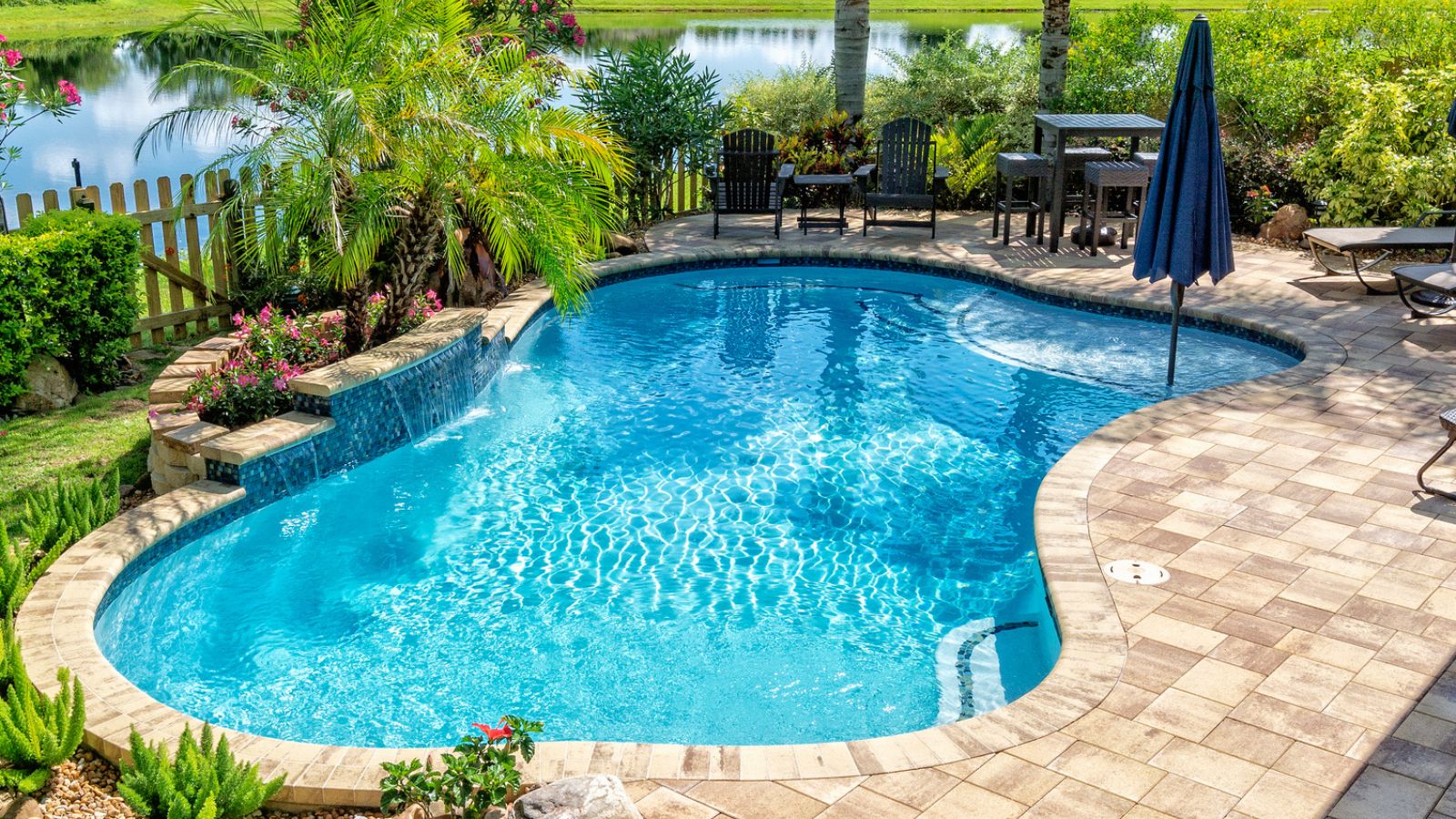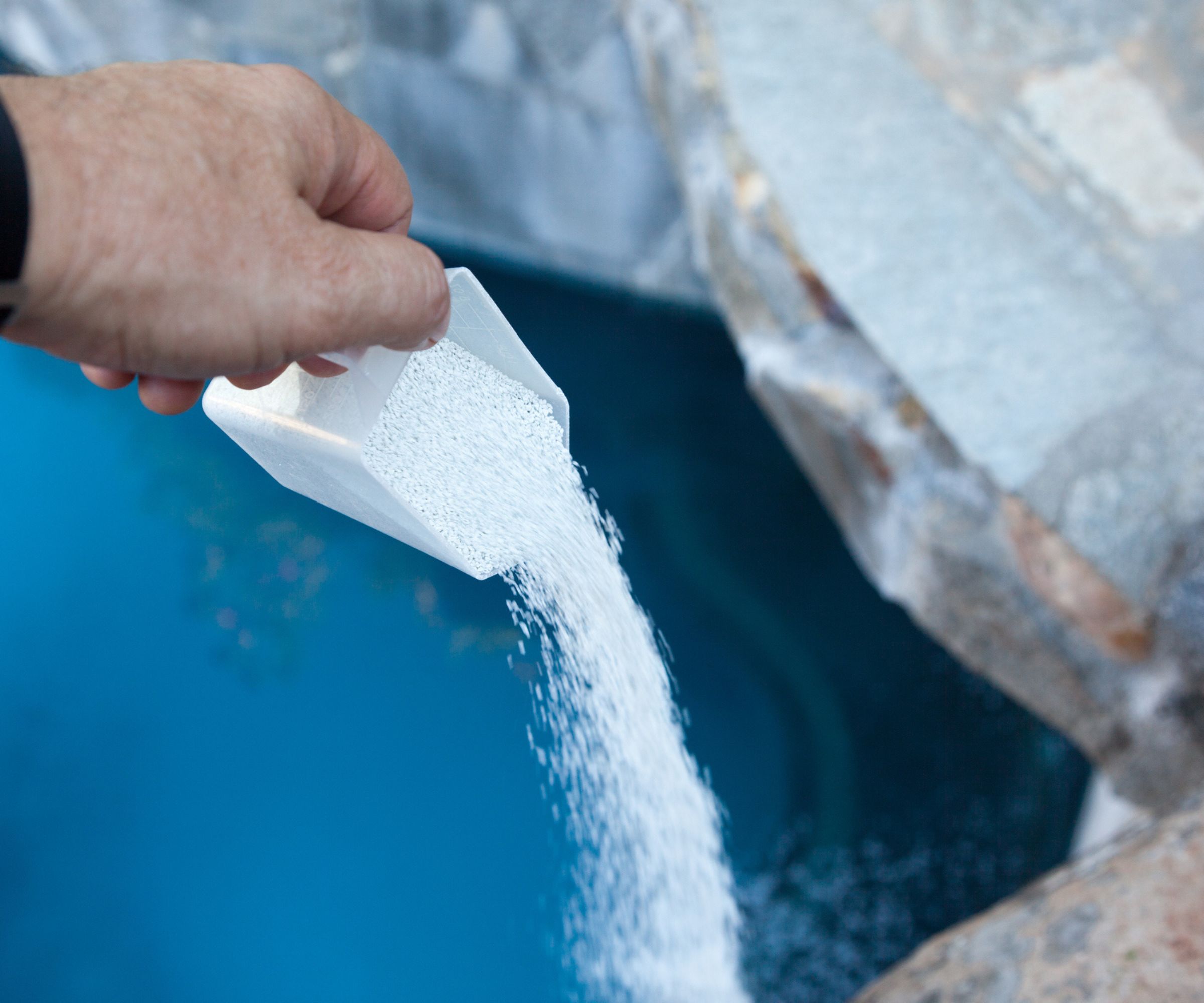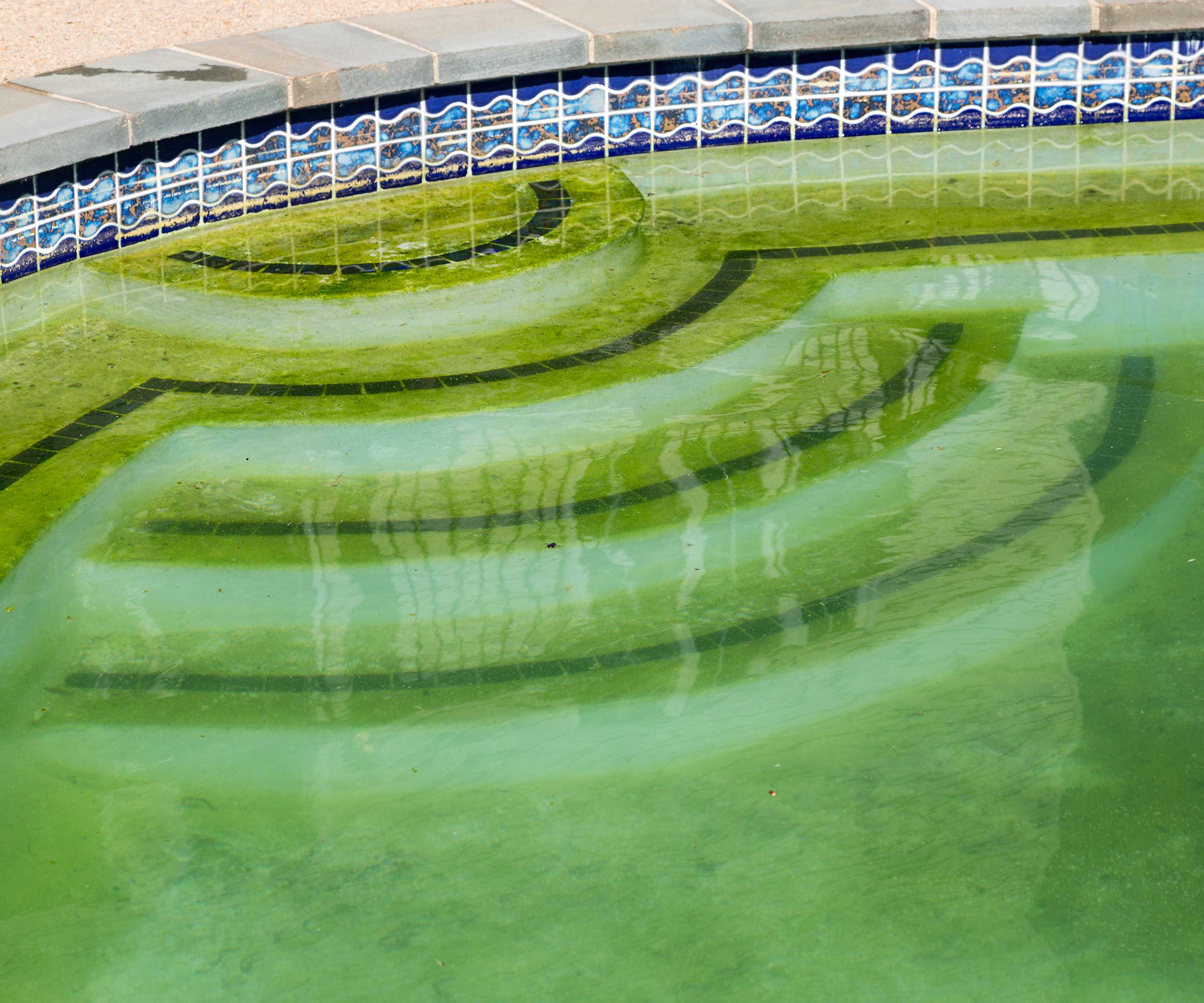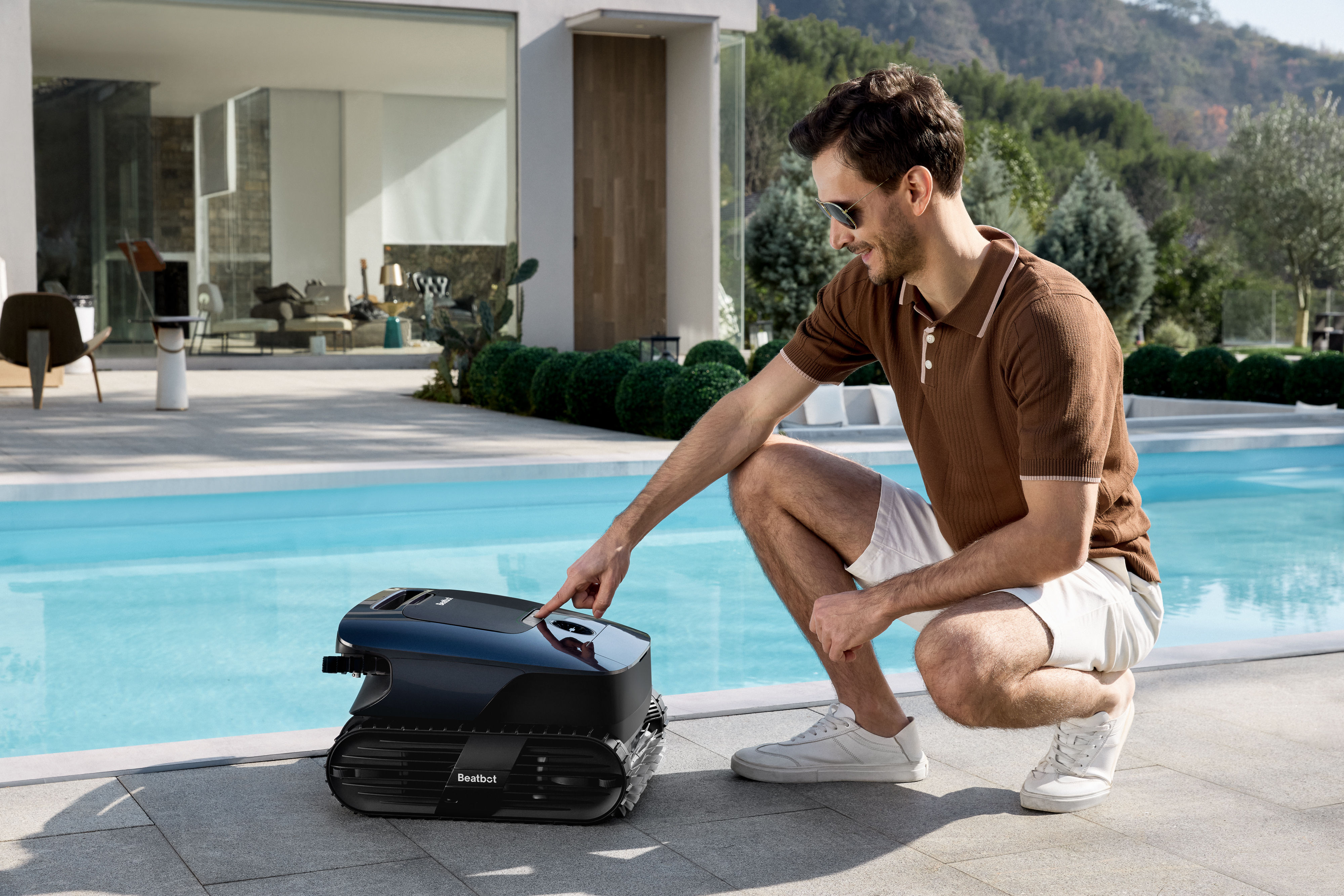Why isn't my pool shock working? An easy fix from a pro
I spoke to a professional about a near-certain fix when your pool shock isn't working properly


It's happened to every pool owner: you go on vacation, you don't have the time, or you simply forget to chlorinate your pool, leaving you with thousands of gallons of gross green water.
Usually, a little pool shock clears up the pool in no time. However, there are times when the shock just can't shift the algae. You pour in your shock, wait a day or two, and nothing happens.
Thankfully, there are a few easy fixes. I spoke to a pool expert to get a method that works almost every time, as well as some insider tips for the rare cases when the classic fix doesn't cut it.
Why wouldn't pool shock work?

Thankfully, by far the most common reason why pool shock wouldn't work is very straightforward. It's all to do with your pool's pH.
Pool expert Rafi Friedman told me that 'Pool shock works best with a balanced pH. If your pool's pH is too high or too low, the shock won't be effective. Ideally, your pool's pH should be close to neutral, around 7.2-7.4, before shocking.'
The reason your pool's pH isn't right is often due to CYA levels. CYA (or cyanuric acid) is also known as chlorine stabilizer, which helps to prolong chlorine's life and effectiveness. If you don't have enough CYA, your chlorine could be weakened. On the other hand, as the name implies, it's acidic, which can lower your pool's pH, which also affects chlorine.

Rafi Friedman is the president of Coastal Luxury Outdoors, a pool building, construction, and cleaning company based in Florida. Coastal Luxury Outdoors provides a five-star service to over 1,000 clients, building more than 100 pools annually.
For more help with pool shock, check out our coverage of how often to shock a pool or the difference between pool shock, chlorine, and bleach.
How do I change the pH of a pool so that the pool shock works?

Adjusting your pool's pH is fairly easy. Rafi told me that 'If your pool's pH is too high, you'll need to add an acid (I recommend sodium bisulfate) to bring it down, and if it's too low, you'll want to use something alkaline like sodium bicarbonate, aka baking soda.'
You can get sodium bisulfate on Amazon and pool bicarb from Home Depot, though that's really just branding - household bicarb like this from Walmart is identical and cheaper.
Adding these chemicals is pretty simple. Rafi says that 'Good pool test kits will come with dosing guides that will take into account the size of your pool and its current pH to help you decide how much to add to bring things back to neutral. If you're unsure of how much to add, add it slowly and test before adding more.'
My CYA and pH are fine, but my pool is still green - what should I do?

If you've tried all of the above and it isn't working, there are some other steps you can take. The first is an obvious one but easy to forget. Make sure you brush the floor and walls to shift the algae into the water. If you haven't brushed down the walls, the algae may be dead from the shock but stuck to the walls.
You should also check the filter and pump are working properly, because the shock may be working, but you aren't filtering out the worst of the algae.
If neither of these work, there are a couple of other potential issues. Copper is often the culprit behind green water. Copper oxidizes in chlorine, which will turn your pool green. This means that if you use algaecide as well as shock, check the label. If you're using a copper-based algaecide, it could be the source of your problem. Try using a copper-free Some pools also have devices that add a little copper into the pool to help kill bacteria. However, if there is too much copper in the pool you need a metal remover like this from Home Depot.
High phosphate levels - above 500 parts per billion - give algae a good food supply, so controlling the levels with a phosphate remover like this from Walmart could help remove cloudiness. That said, if you manage to kill the algae outright, it shouldn't be a problem.
You should also use a flocculant like this from Lowe's. Flocculants help to combine fire particles into clumps, so this can help with cloudiness. It may be that the algae is dead, but hanging in the water. A flocculant will gather together all the algae into a sediment which will can be easily removed with a pool vacuum.
What are the alternatives to pool shock?
If this all sounds like too much work, unfortunately, you're out of luck. Rafi says that 'If you want to avoid having to shock your pool, the best way is to probably use a completely different pool sanitation system. Something like saltwater or UV light will allow you to sanitize your pool without using any chlorine.'
That's great in theory but it would mean totally rebuilding parts of your pool to accommodate a new cleaning system. Though shock can be frustrating to use, it's still the best way to clean up a green, cloudy pool.
Pool shock FAQs
Does pool shock expire?
Yes, pool shock can expire. Liquid chlorine loses strength after about a month. Granular shock can last much longer - around five years - but if the bags it is in deteriorate, it can become wet and lose the ability to clean your pool.
For more about pool shock, take a look at our coverage of how often to shock a pool or the difference between pool shock, chlorine, and bleach.
Sign up to the Homes & Gardens newsletter
Design expertise in your inbox – from inspiring decorating ideas and beautiful celebrity homes to practical gardening advice and shopping round-ups.

As a gardens and lifestyle contributor, Alex makes sure readers find the right information to help them make the best purchase. Alex got his start in reviewing at the iconic Good Housekeeping Institute, testing a wide range of household products and appliances. He then moved to BBC Gardeners’ World Magazine, assessing gardening tools, machinery, and wildlife products.
-
 Step up your pool cleaning routine with Beatbot AquaSense 2 Ultra
Step up your pool cleaning routine with Beatbot AquaSense 2 UltraCelebrate National Pool Opening Day by saving up to $618 on a luxurious pool cleaning solution from Beatbot.
By Sponsored
-
 Isabella Rossellini's kitchen defines 'pantry perfection' – her sleek storage method is one of the most beautiful ways to bring order to your shelves
Isabella Rossellini's kitchen defines 'pantry perfection' – her sleek storage method is one of the most beautiful ways to bring order to your shelvesA custom Chilean applewood pantry lines the walls of the Conclave actress's kitchen – you can tap into her stunning technique from $42
By Megan Slack